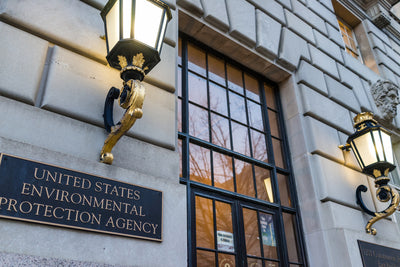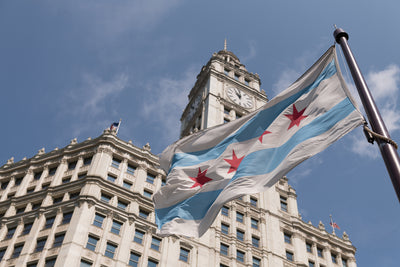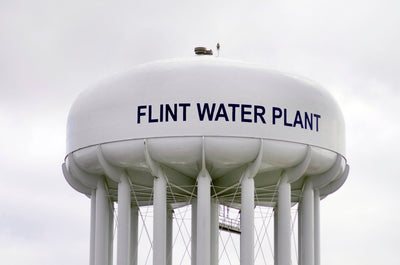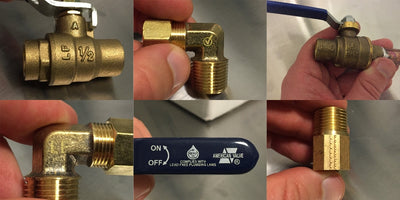Analies Dyjak, M.A. | Head of Policy and Perspectives
Updated 12/8/2023 to include new EPA proposals
Lead Pipes Are Still Problematic in 2023
In April 2023, the EPA released a report with a comprehensive assessment of service line infrastructure, and revealed that an estimated total of 9.2 million lead pipes are servicing homes across the country. Many homes containing lead plumbing were built before 1986, when the use of lead was banned in pipes, solder and plumbing. Flint, Michigan dominated headlines in 2015 when 99,000 people were exposed to unsafe levels of lead, including thousands of children. However, Flint was not and is not the only city with unsafe lead levels. There are dozens of large cities that have lead levels above what health officials claim to be safe, including Chicago, Boston, New York City, and Los Angeles.
No Safe Level Of Lead For Children
The current federal Action Level for lead in drinking water is 15 parts per billion. Lead is unique from other drinking water contaminants because it follows the 90th Percentile Rule, which has been criticized by various reputable environmental non-profits. The Centers for Disease Control has acknowledged that 15 parts per billion is not a health standard, but rather a feasible level of enforcement - meaning anything less than 15 parts per billion is too stringent for municipal compliance. The American Academy of Pediatrics has stated that there is no safe level of lead for children. Any level of exposure has the potential to cause irreversible developmental damages, including; lowered IQ’s, behavioral difficulties, and other learning problems. EPA has even acknowledged that children should not be exposed to any level of lead.
2021 Updates
EPA made a handful of small modifications to the original 1991 Lead and Copper Rule. One of the major updates to the rule is increasing EPA’s “inventory” of Lead Service Lines throughout the country. Once LSL’s and pipes have been identified, EPA will require communities to “find and fix'' homes that exceed 15 parts per billion. The system must provide documentation to the state if they’re unable to fix or mitigate the lead levels. Under the rule revisions, systems serving greater than 50,000 people will be required to make the LSL inventory available online. Also, municipal systems will be required to provide annual notices to homeowners with LSL’s. Replacing LSL’s are particularly tricky to manage because they’re co-owned by the city and homeowner. Some cities have programs to coordinate replacing the public and private side of the line at the same time.
EPA’s New “Trigger Level” For Lead
Part of EPA’s revisions to the Lead and Copper Rule include a new “trigger level.” According to the regulatory revisions, systems that have a 90th percentile higher than 10 parts per billion will be required to work with their state to determine annual lead line replacement goals. This “trigger level” is not a new Action Level, and does not initiate a violation if a water system has higher than 10 ppb lead. EPA also pointed out in the proposed regulation that the trigger level is also not a health standard. As previously stated, any concentration of lead can be harmful to children.
2023 Proposed Updates to the Lead and Copper Rule
On November 30, 2023, the U.S. Environmental Protection Agency (EPA) announced new proposed Lead and Copper Rule Improvements.
Key provisions in the proposal include:
- 100% Lead Pipe Replacement within 10 years.
- Locating Legacy Lead Pipes. Water systems are currently required to provide an initial inventory of their lead service lines by October 16, 2024. Under the proposal, all water systems would be required to regularly update their inventories, create a publicly available service line replacement plan, and identify the materials of all service lines of unknown material.
- Improving Tap Sampling. The proposal would make key changes to protocols that water systems must use for tap sampling informed by best practices.
- Lowering the Lead Action Level. EPA is proposing to lower the lead action level from 15 µg/L to 10 µg/L. When a water system’s lead sampling exceeds the action level, the system would be required to inform the public and take action to reduce lead exposure while concurrently working to replace all lead pipes. For example, the system would install or adjust corrosion control treatment to reduce lead that leaches into drinking water.
- Strengthening Protections to Reduce Exposure. Water systems with multiple lead action level exceedances would be required to conduct additional outreach to consumers and make filters certified to reduce lead available to all consumers.
EPA anticipates finalizing the Lead and Copper Rule Improvements prior to October 16, 2024.
Will The New Updates Better Protect Public Health?
In the short term, no. There is no real "quick fix" for lead contamination. Replacing lead pipes and Lead Service Lines takes time, and can actually cause an increase in lead levels during and after construction. These changes are a step in the right direction, but implementation takes time.
To protect yourselves and your families in the meantime, here are some recommendations on how to reduce your lead exposure:
-
Allow your faucet to run for 2 minutes prior to drinking tap water.
-
See if your city or town has a free lead testing program. Washington D.C., New York City, and several other cities have a free lead testing program. If you live in an area that doesn’t have free lead testing, you can pay to send your sample to get laboratory tested.
-
Purchase a filter that is optimized and certified to remove lead from drinking water.
How To Tell If Your Home Has Lead Plumbing
What Are 'Forever Chemicals' or PFAS?
Everything You Need To Know About TDS/ppm Meters

















